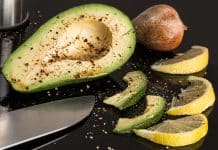Estimated reading time: 4 minutes
What is summer without beans? Don’t be put off if you are a new gardener because this is probably one of the easiest plants to grow, maintain and harvest. These plants are generally free of pests.
Read related articles from Naledi Farm.
Know your beans
There are two types of beans: shell and snap. Both types can grow as vines or as bushes. Shell beans are primarily removed from their pod to be eaten fresh or dried to save for later. Think of hearty winter soups with kidney, butter and black beans. Snap beans, such as green beans, are eaten inside their pods. Green beans are green but other snap beans can be yellow, purple or even speckled, depending on the variety.
Pole beans are a type of vining bean that must be supported. You can use whatever support system (trellis, pole, fence, etc.) you have available. Bush beans grow in a bush and do not need a trellis for support.
Prepare for planting
Know when to plant: This is a warm-weather crop. They should be planted in spring after the last frost has passed. Planting too early in the season will cause the seeds to freeze and die. Keep sowing every couple of weeks until early summer to ensure a continuous harvest.

Know where to plant: Grow these plants in a spot that receives a minimum of six to eight hours of sunlight. Because pole beans grow upwards, they are perfect for people who do not have much space. They will grow well in pots on the patio. Bush beans grow outwards and thus require more space. A plot that is two to three feet (around 0,6 to 1m) wide will work well.
Know how to plant: In my book, this plant is one of the few plants that should not be started as seedlings indoors. This is because they have a delicate root structure that is easily damaged and may not survive the transfer. Sow your seeds directly into the ground. They will germinate for approximately a week and grow surprisingly quickly.
Prepare your soil: These plants grow best in soil with good drainage and lots of nutrients. Prepare your soil with well-rotted organic matter.

Set up your support structure: If you are planting pole beans, get support in place before planting. You may need to tie young plants initially, but as the beans grow, they will naturally wind themselves around the structure for support.
Planting your beans
Sowing beans: Sow beans one seed per hole at a depth of 5cm and approximately 30cm apart.
Water your seeds regularly: Immediately after planting, give your seeds plenty of water. Continue to water the seeds once every two to three days, so that the soil is always moist. Take care not to over water, as too much water (leaving puddles or pools on the topsoil) will cause the seeds to rot.
Put down a layer of mulch: Don’t forget to add a layer of mulch as soon as the seeds sprout. Do this by simply spreading a thin layer of dried leaves or straw on top of your soil. Don’t pile the mulch up against the stem of your plants as this can invite leeches and other unwanted guests to nest there. Mulch will help block out weeds and trap moisture – two good things for new plants.
I hope this helps remove the panic out of planting your own beans. If you sow them now, they will be ready to harvest in November. – Manti Maifadi, Naledi Farm
For more information on Naledi Farm or for advice on growing vegetables at home, contact Manti on 082 800 2327 or email bookings@naledifarm.co.za.








